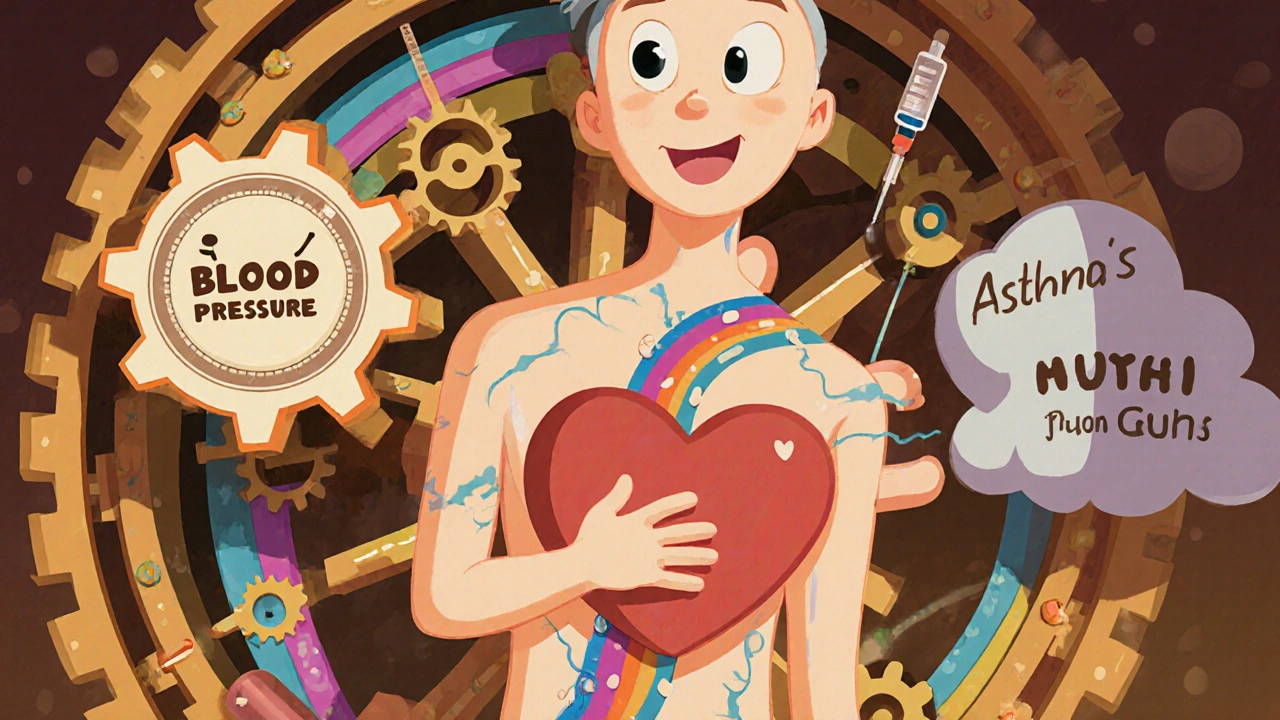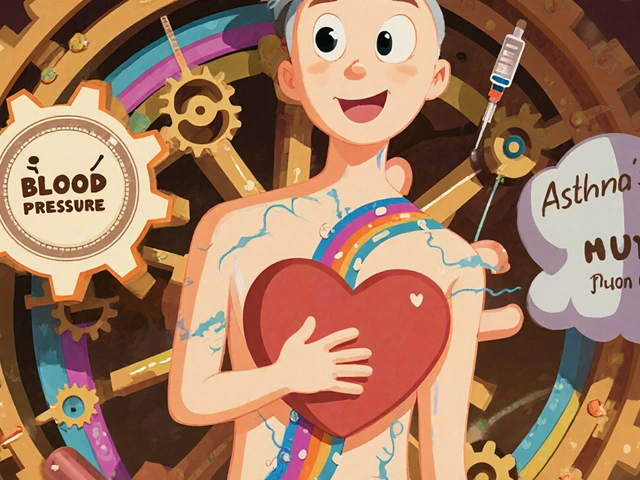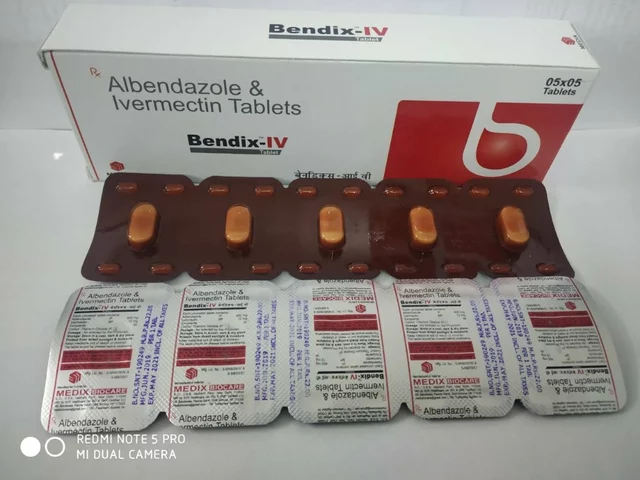What Are Drug Side Effects: Definition, Causes, and Real-World Examples

Medication Risk Estimator
Every time you take a pill, injection, or patch, your body reacts-not just to the medicine you want, but to everything else it does along the way. That’s what we call a drug side effect. It’s not a mistake. It’s not always bad. And it’s not something you can always avoid. Side effects are the unintended consequences of how drugs work in your body. They’re built into the biology of treatment.
What Exactly Is a Drug Side Effect?
The U.S. Food and Drug Administration (FDA) defines a side effect as an unwanted, undesirable effect that may be related to a drug. But that’s just the official version. In real life, it’s more nuanced. A side effect isn’t always harmful. Sometimes, it’s helpful. Take finasteride, a drug prescribed for enlarged prostate. One of its side effects? Hair growth. For men with male pattern baldness, that’s not a side effect-it’s the goal. The same drug, different outcome. The technical definition used by experts like those at StatPearls says it best: a side effect is a predictable or dose-dependent effect of a drug that’s not the main reason you’re taking it. That means if you take a blood pressure pill and your lips get dry, that’s a side effect. If you take an antibiotic and your stomach hurts, that’s a side effect. If you take a painkiller and feel unusually sleepy, that’s a side effect too. What makes this confusing is how often people mix up terms. An adverse event is any negative health change that happens after taking a drug-whether it’s caused by the drug or not. A side effect is specifically tied to the drug’s action. And an allergic reaction? That’s your immune system going haywire. It’s different. One is a chemical reaction. The other is an immune one.Why Do Side Effects Happen?
Drugs don’t target just one spot in your body. They move through your bloodstream, interact with receptors, enzymes, and organs-and sometimes they hit the wrong target. Think of it like using a sledgehammer to fix a watch. You might get the job done, but you’ll probably break a few gears in the process. Here’s how it breaks down:- Drug action isn’t selective. A beta-blocker slows your heart to lower blood pressure-but it can also tighten your airways, making breathing harder for people with asthma.
- Dosage matters. Too much of a painkiller like ibuprofen can damage your stomach lining. That’s why 15-30% of regular users develop gastritis.
- Your body’s chemistry is unique. Your liver breaks down drugs using enzymes called CYP450. About 40-95% of people have genetic variations in these enzymes. That means two people taking the same dose of the same drug can have wildly different experiences.
- Age changes everything. People over 65 are 3 to 5 times more likely to have serious side effects. Their bodies process drugs slower, and they often take multiple medications at once.
- More drugs = more risk. Taking five or more medications increases your chance of a side effect by 88%. That’s why older adults are especially vulnerable.
Types of Side Effects: Predictable vs. Unpredictable
Not all side effects are created equal. Experts classify them into two main types:- Type A (Augmented): These are predictable, dose-dependent, and make up 85-90% of all side effects. They’re extensions of the drug’s main action. For example, blood thinners cause bleeding because that’s how they work-just too much of it. Antibiotics can cause diarrhea because they kill good gut bacteria along with bad ones.
- Type B (Bizarre): These are unpredictable, rare, and not tied to dosage. They’re often allergic or immune-related. Anaphylaxis from penicillin, or the rare blood clots linked to the Janssen COVID-19 vaccine, fall into this category. They account for only 10-15% of reactions, but they’re the ones that make headlines.
- Very common: Affects 1 in 10 or more people
- Common: 1 in 10 to 1 in 100
- Uncommon: 1 in 100 to 1 in 1,000
- Rare: 1 in 1,000 to 1 in 10,000
- Very rare: Less than 1 in 10,000
Real Examples: From Mild to Life-Threatening
Here’s what side effects actually look like in real life, across common medications:- NSAIDs (ibuprofen, naproxen): Stomach upset, ulcers, or bleeding. Happens in 15-30% of regular users.
- Antibiotics (like amoxicillin or clindamycin): Diarrhea. Affects 5-30% of people, depending on the drug. Sometimes it’s caused by C. diff, a dangerous infection.
- Doxycycline: Sun sensitivity. About 10% of users get bad sunburns even with minimal exposure.
- Chemotherapy drugs: Nausea, hair loss, fatigue. Up to 90% of patients experience these, depending on the regimen.
- Immune checkpoint inhibitors (cancer immunotherapy): The immune system attacks healthy organs. Up to 85% of patients get side effects like colitis, hepatitis, or thyroid problems.
- SGLT2 inhibitors (for diabetes, like canagliflozin): Increased risk of lower limb amputations. The FDA added a boxed warning after data showed a 1.77-fold higher risk.
- mRNA COVID-19 vaccines: Myocarditis (heart inflammation) in young men. About 40.6 cases per million second doses in males aged 12-29.
Why So Many People Don’t Know What’s Coming
A 2023 Consumer Reports survey found that 57% of people thought every side effect listed on the label would definitely happen to them. That’s not true. Most side effects listed are rare. But the lists are long because regulators have to include anything even remotely possible. Worse, many patients don’t understand the difference between a side effect and an allergic reaction. One Reddit analysis of 1,247 threads showed 68% of users were confused about this. That leads to people stopping medications they need-like statins-because they think muscle pain means it’s dangerous. But a Mayo Clinic study found 62% of those cases were nocebo effects: symptoms that appeared even when patients took a placebo. And here’s the scary part: only 1-10% of serious side effects are ever reported to official systems. That means the data we rely on is incomplete. The FDA’s Adverse Event Reporting System has over 22 million reports-but that’s likely just the tip of the iceberg.
What You Can Do About It
You can’t eliminate side effects. But you can reduce your risk:- Talk to your doctor before starting or stopping any drug. Don’t quit because you feel weird. Ask: Is this expected? Should I be worried?
- Use the FDA’s Medication Guides. These are plain-language handouts required for 185 high-risk drugs. Patients who read them understood side effects 85% of the time-compared to 45% with regular labels.
- Know your meds. If you take five or more drugs, ask about drug interactions. Polypharmacy is the #1 risk factor for side effects in older adults.
- Check the Beers Criteria. This list, updated yearly by the American Geriatrics Society, names 30 medications to avoid in people over 65 because they’re too risky.
- Consider genetic testing. If you’re on tamoxifen for breast cancer, a CYP2D6 test can tell you if your body will process it properly. It could prevent 12,000 recurrences a year in the U.S.
- Report side effects. Use the FDA’s MedWatcher app or report online. Your report helps others.
The Bigger Picture: Safety in a Complex System
The global pharmacovigilance market is growing fast-projected to hit $12.8 billion by 2030. Why? Because we’re learning how to catch side effects faster. The FDA’s Sentinel Initiative monitors 200 million electronic health records in real time. It spots dangers 18-24 months earlier than old methods. New tools use AI to predict who’s most at risk. One pilot program predicted NSAID-related stomach bleeds with 82% accuracy using patient data. The NIH’s All of Us program has already found 47 genetic links to unexpected drug reactions. But the biggest challenge remains: underreporting. Patients don’t know how to report. Doctors are too busy. And many side effects-especially mild ones-are ignored. The truth? Every drug is a gamble. The goal isn’t to avoid side effects entirely. It’s to understand them, weigh them against the benefits, and make informed choices. A drug that helps you live longer, even with a dry mouth or occasional dizziness, might be worth it. A drug that gives you a 1 in 10,000 chance of a heart attack? That’s a different calculation.Bottom Line
Drug side effects aren’t bugs-they’re features of how medicine works. They’re predictable, unpredictable, common, rare, annoying, and sometimes life-changing. But they’re not random. There’s science behind them. And you have more power than you think. Know your meds. Ask questions. Report what you experience. And remember: a side effect isn’t always a reason to stop. Sometimes, it’s just a sign you need to adjust.Are all side effects harmful?
No. While many side effects are unwanted, some can be beneficial. For example, finasteride, used for prostate issues, often causes hair growth-something many men want. Minoxidil can cause facial hair, but users with hair loss often accept it as a trade-off for thicker scalp hair. Side effects are simply effects that aren’t the main purpose of the drug, whether good or bad.
What’s the difference between a side effect and an allergic reaction?
A side effect is a direct chemical result of how the drug interacts with your body-like drowsiness from antihistamines or stomach upset from NSAIDs. An allergic reaction is your immune system overreacting to the drug, often causing hives, swelling, trouble breathing, or anaphylaxis. Allergies are rare, unpredictable, and can be life-threatening. Side effects are far more common and usually not dangerous.
Why do some people get side effects and others don’t?
Genetics play a huge role. About 40-95% of people have variations in liver enzymes (like CYP450) that control how fast drugs are broken down. Age, kidney or liver function, other medications, and even diet can change how your body handles a drug. Someone with kidney disease is 4.2 times more likely to have side effects. Someone taking five or more drugs has an 88% higher risk.
Can side effects show up months after starting a drug?
Yes. Some side effects are delayed. For example, long-term use of proton pump inhibitors (PPIs) can lead to bone loss or vitamin B12 deficiency after years. Chemotherapy can cause nerve damage that appears months after treatment ends. Even vaccines can trigger rare side effects like myocarditis weeks after the shot. Always report new symptoms, no matter how long you’ve been taking the drug.
Should I stop taking my medication if I get a side effect?
Never stop without talking to your doctor. Many side effects are mild and go away as your body adjusts. Stopping suddenly can be dangerous-like withdrawing from blood pressure or antidepressant meds. Some side effects, like muscle pain on statins, may be psychological (nocebo effect). Your provider can help you decide if it’s safe to continue, lower the dose, or switch drugs.
How can I report a side effect?
In the U.S., you can report to the FDA’s MedWatch program online at fda.gov/medwatch or by calling 1-800-FDA-1088. You can also use the FDA’s MedWatcher app, launched in October 2023, which lets you report side effects in real time. Reports from patients help regulators spot new risks faster. Even if you’re not sure the drug caused it, report it. Your input matters.





Jennifer Walton
November 15, 2025 AT 00:35Side effects aren’t flaws. They’re feedback.
Kihya Beitz
November 15, 2025 AT 02:00¯\_(ツ)_/¯
Jessica Chambers
November 15, 2025 AT 18:12Still worth it? Maybe. But I’m not buying the marketing.
Shyamal Spadoni
November 17, 2025 AT 15:58Ogonna Igbo
November 18, 2025 AT 04:10BABA SABKA
November 19, 2025 AT 01:00It’s not pharmacology. It’s medical fragmentation. And it’s killing people slowly.
Chris Bryan
November 20, 2025 AT 12:16Jonathan Dobey
November 20, 2025 AT 14:58Finasteride didn’t cause hair growth. It revealed the latent potential of your follicles. The drug didn’t break you-it cracked open your biological cathedral. You’re not a patient. You’re a prophet of pharmacological revelation.
ASHISH TURAN
November 21, 2025 AT 12:08Ryan Airey
November 21, 2025 AT 14:36Stop blaming the label. Start blaming the silence.
Hollis Hollywood
November 22, 2025 AT 14:07That’s the real problem. We’re taught to suffer silently. We’re not taught to speak up. And the system doesn’t listen until someone dies. I just wish we could talk about this before it’s too late.
Aidan McCord-Amasis
November 24, 2025 AT 13:04Adam Dille
November 24, 2025 AT 21:11Instead of fighting it, maybe we should listen. 🌿
Katie Baker
November 26, 2025 AT 01:15